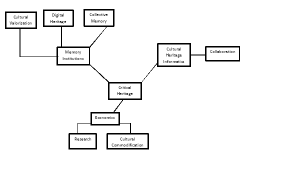As I am writing this post, I realize that I didn’t write one for last week when we first started developing. At least, I don’t remember posting one so I apologize. This week has been extremely chaotic for my personal life so it is no wonder that I keep running into so many road blocks with my writing. On Wednesday, my parents and youngest sister almost died in a serious car accident that completely totaled their vehicle and turned it into a convertible. Thursday my laptop crashed as I was going to shut it down and I lost all of my research on one of my topics for the project so I have to redo it. And then today, Friday, I woke up and checked my bank account in order to make sure a bill payment went through only to find out that someone on the other side of the country was using my account to make fraudulent purchases. Very chaotic, indeed.
Away from personal.
Last week when we decided the teams and roles for all of our people, I ended up in content where I typically end up. I originally wanted to be a part of web design but I tend to thrive in content and research due to my areas of interest. Besides suffering writer’s block due to my preoccupied mind, I also had an issue with something I typically try to avoid: being politically correct in terms of ethnicity and race. Without giving too much of the project idea/theme away, I can comfortably say that one of my topics deals with civil rights and the issue of racial discrimination. This is an issue for me because I am always unsure of what is politically correct to label someone.
Being the modern university student that I am, there are many things that I believe I am better about than my parents such as eating healthier, managing money better, actually getting a degree, and not labeling people. My generation has had an issue with labels since middle school when bullying was terrible enough for assemblies and everyone had to listen to faculty rhetoric about how labels are obsolete and everyone is human…and labels are bad. On repeat. I got it, I get it, I’ll keep getting it. I try my hardest to not label or belittle anyone and I feel like I generally do okay, but it is impossible to get away from labels in the social sciences. I mean, my degree specialization is in ASIAN studies.
This is why I am having one of my issues with this piece on civil rights. A lot of literature labels people as African American, Asian American, Native American, white, etc. But if I use these labels then I am erasing Caribbean Americans and including them as African Americans. Same with European Americans that have darker complexions or are ancestrally from Africa. I would be taking away Chinese Americans, Japanese Americans, Filipino Americans, Korean Americans, etc. and labeling them as Asian Americans. And not all white people are equal!! I am so tired of being ‘othered’ in classes that cover issues about race because I have fair skin. Italian, Irish, and Polish Americans were not always considered as equal, it’s a large misconception. The topic just becomes too touchy when race is involved and yet race can’t be taken away from the topic because it is the key reason behind the topic.
Civil rights is just a difficult topic to write about while trying to include everything. If civil rights was an easy topic, than there wouldn’t be so many civil rights violations going on today. Or rather, human rights violations disguised as civil rights issues. It’s impossible to be politically correct all of the time or even some of the time because no matter what, you are going to offend someone. Try to at least keep that in mind if you visit our site once it is finished.


